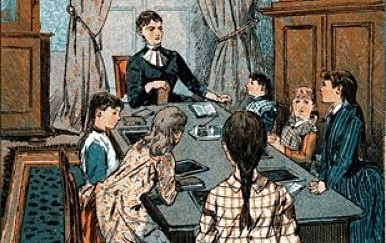Seven Things I Wish I Had Known Before I Walked into the Classroom
★★★★★


After several years of teaching, I compiled a list of basic classroom management survival tips. They have served me well, helping me to have order and respect in the classroom, and helping me avoid many troublesome problems that could have arisen.
- Respect your students. I like to answer them with, “Yes, sir,” or “Yes, ma’am.” That may be out of your personal comfort zone, but you get the idea. If we respect our students, they do notice and will have more respect for us.
- Meet and greet them at the door. Welcome your students into your room with a smile. This is a great time to collect homework if it is due, as well.
- It is very helpful to only let one student go to the bathroom at a time if they really need to go during class time or during a study hall. (They should have plenty of breaks and time between classes when it’s okay to go to the bathroom, but during class is not an ideal time to go and should be discouraged.)
If they go one at a time, it is easier for you as a teacher to keep track of who is gone and going to the bathroom won’t turn into a social time where two or more students are out of the classroom together. It also makes students go more quickly as someone else may be waiting for them to get back so that he can go (as in a study hall, for example.)
- Only allow one student out of the classroom at a time, or to get up and get a tissue, etc. Again, it limits distractions and gives that student a little extra accountability as they know that someone else may be waiting for their turn.
- Do not allow any noise or distraction while you are teaching. Don’t ever keep teaching while the students are talking or distracting you or other students. Just stop talking, look at them, expect them to stop talking or doing whatever it is that they are doing, and then return to teaching. I also like to glance and smile at them a few times right after this to hold them accountable and so that they will know that I am keeping an eye on them.
- Use your Eagle Eye when necessary. That’s an eyes wide-open stern look that says: “That is not allowed in my classroom.” I say that out loud too— firmly, but nicely. Add a smile after you say it. That’s a great sentence. It may be helpful to memorize it.
Using that sentence with the eagle eye was your warning. If the behavior gets repeated, you need to be firm and take the next step of action, whatever it is. This should be in accordance with your school procedures or have been approved by your school board or administration. It’s hard to do it, but it will pay huge dividends in the long run.
- Give students a cover sheet any time they are taking tests. Also walk around their desks, down the aisles, and glance at the floor. I’ve heard of students laying review sheets or papers with the answers on them on the floor by their desks. It’s also good to say something like, “Check around your desks. No looking around during the test. Avoid every appearance of evil. I’m keeping you accountable because I care.”
This basic list helps me, and I hope it’s a useful tool for you as well!
Related Items
Leave a Reply
Feedback